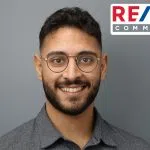
ROTHENBURGER: Kamloops flirts with population of 100,000, 34 years late
KAMLOOPS IS GROWING. It doesn’t take a genius to figure that out.
Statistics Canada numbers released this week show by how much. The city grew by 8.4 per cent in the five years up to 2021, bringing the population to 97,902, the 12th largest city in B.C.
Kamloops wasn’t the fastest growing place by any means. Kelowna, for example, grew 13.5 per cent and now boasts a population of 144,576. Nanaimo went up 10.3 per cent, to 99,863.
But the trading zone — including rural areas and communities like Savona and Chase —is included, it jumps into the top five with a growth rate of more than 10 per cent and a population of 114,142. It’s now a “metropolitan area,” according to the census.


